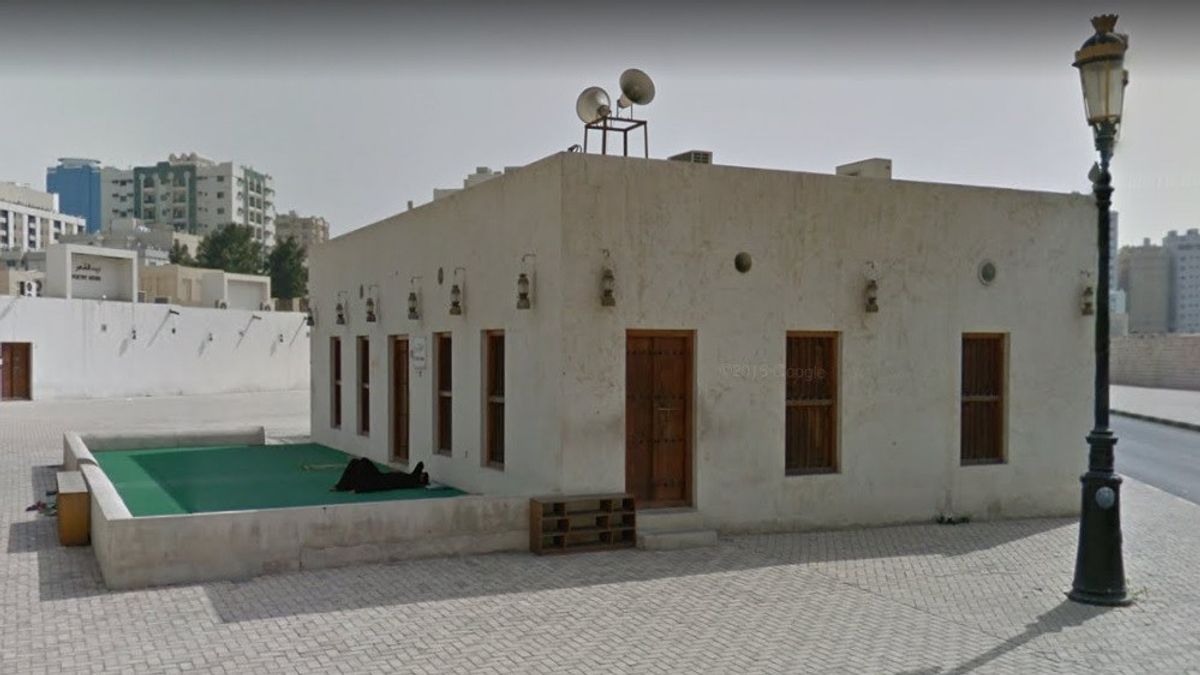JAKARTA - Long before the United Arab Emirates was formed and became one of the modern countries in the world. The mosque has been established and used for worship by people in the region today including in Hisn Ave, Sharjah, United Arab Emirates.
Believed to be nearly 200 years old, alshoyoukh Mosque is rich in history and memories. The mosque that became a place of interaction of citizens, in addition to worship, before the existence of skyscrapers in the third largest city in the United Arab Emirates.
Although a larger mosque has been built in al-Gharb neighborhood, people still come here to pray. Mosque imam Yahia Mohammed said the mosque meant a lot to the locals.
According to him, the sense of owning this mosque increases with increasing time. In fact, according to him, some worshippers enjoy prayers in the small courtyard of the mosque late at night, roofed with the sky.
"During Ramadan, workers, business owners from businesses around the mosque and tenants from nearby buildings come to pray," Mohammed, the mosque's imam eight years ago, told The National News.
"It's everything to me spiritually and the relationship between us is strong. My children were all born here and this mosque also means a lot to them before they leave the country. It's part of our lives," continued this man from Mauritania.

Meanwhile, Sharjah Institute for Heritage Chairman Dr. Abdulaziz Al Musallam said much has changed in this part of the emirate since the mosque first opened.
"The houses of sheikhs, local figures and merchants of Sharjah, such as the house of Sheikh Majid bin Saqr, the house of Sheikh Sultan bin Saqr, and others are in this area," said Dr. Musallam.
The 90-square-meter building has undergone several changes over time, since the first time the mosque was established, Dr. Musallam said.
"In the first stage palm tree leaves are used to build mosques. Later, coral stones brought out of the sea replaced palm trees on the walls, while logs were used to cover the roof," he explained.
Before use in construction, the stones are placed in a fire pit and left for 24 hours.
"It helps in the extraction of white plaster, which is also used in construction after being mixed with straw and sand," he said.
Meanwhile, Sheikh Khalid bin Mohammed Al Qasimi renovated the mosque in the 1960s.
"It says this happened in February 1962 but another story says it happened towards the end of the 1960s," Dr Musallam said.
Straddled by it, a small rectangular courtyard in front of the mosque was originally built to allow travelers to rest before continuing their journey.
Al Hisn Fort is just to the right of the mosque, which retains its original design after renovations at the behest of Sheikh Dr. Sultan bin Muhammad Al Qasimi.
The mosque, which can accommodate up to 125 people, is surrounded by shops, small businesses and multi-storey buildings.
"This mosque still welcomes worshippers every day, except on Friday prayers," said Dr. Musallam.
In light of the COVID-19 pandemic, the capacity of this historic mosque is also adjusted to the implementation of health protocols, in order to prevent the spread of COVID-19.
With the application of social distance, the capacity of the mosque only allowed to fill about 36 men can pray at the same time, much reduced compared to the actual capacity.
The English, Chinese, Japanese, Arabic, and French versions are automatically generated by the AI. So there may still be inaccuracies in translating, please always see Indonesian as our main language. (system supported by DigitalSiber.id)













